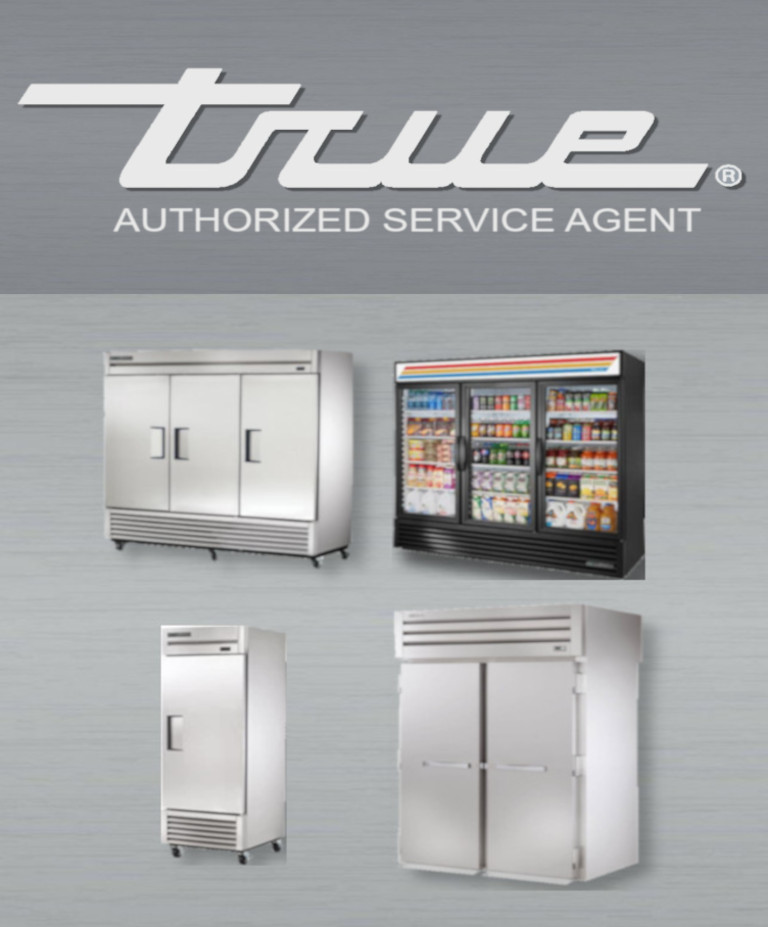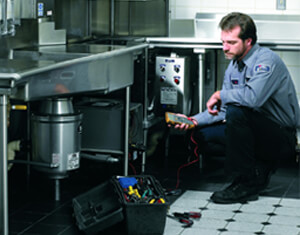The Ultimate Overview to DIY Home Appliance Repair Work Methods
From fridges to dishwashers, understanding how to troubleshoot and repair these gadgets can conserve you time and money. Are you prepared to find important strategies that will equip you to manage repair services with confidence?
Recognizing Typical Device Troubles
When you count on your home appliances, it can be discouraging when they all of a sudden quit working or break down. Understanding common home appliance problems can aid you fix concerns effectively. For instance, if your fridge isn't cooling down, inspect the temperature settings or check the door seal for spaces. A malfunctioning washing device could be as a result of a clogged up drain filter or a broken belt.
If your stove isn't home heating, faulty components or thermostat issues can be to blame,. Dish washers usually experience problems with water drainage, so make certain the filter is clean and the drain hose pipe isn't kinked.
Likewise, pay attention for uncommon audios; they usually suggest mechanical concerns. By identifying these signs, you can conserve time and possibly avoid expensive repair services. A little expertise goes a long means in maintaining your appliances, so remain notified to keep whatever running smoothly.
Vital Devices for DIY Repairs
Prior to diving right into DIY home appliance repairs, it is essential to collect the right tools to guarantee the process goes efficiently. Beginning with a great collection of screwdrivers, consisting of both flathead and Phillips, as they're essential for opening most appliances. You'll additionally desire a pair of pliers for clutching and turning wires or tiny components.
Don't fail to remember a multimeter; it aids you test electrical parts and diagnose problems properly. An outlet set is handy for loosening or tightening up screws, while an energy blade can be helpful for opening or reducing cables product packaging.
Ultimately, consider having a flashlight available to light up dark areas inside your devices. With these important devices, you'll be well-appointed to tackle numerous fixings, saving both money and time. So, collect your gear and prepare yourself to roll up your sleeves!
Safety First: Preventative Measures to Take
Prior to you begin any type of device repair service, it's important to prioritize safety. Make certain you use individual protective tools, detach the source of power, and keep your work area arranged. These basic preventative measures can aid protect against mishaps and ensure a smoother fixing procedure.

Individual Protective Tools
Security gear is an important part of any type of Do it yourself home appliance fixing job. Steel-toed boots are additionally a wise choice, particularly when lifting hefty devices. Remember, being prepared with the best equipment keeps you risk-free and concentrated on finishing your repair work successfully.
Power Resource Interference
To guarantee a secure DIY appliance repair service, separating the source of power is essential. Prior to you begin any kind of work, you need to transform or disconnect the home appliance off the circuit breaker. This easy action avoids electric shocks and guarantees that you can concentrate on the fixing without fretting about unintended activation. Constantly confirm that the appliance is off by evaluating it with a voltage tester. If you're managing larger appliances, like a washer or dryer, make certain to protect the power cord and stay clear of any type of call with water. Keep in mind, security first! When you're confident that the power is disconnected, you can with confidence wage your repairs, understanding you've taken the needed precautions to secure yourself.
Job Area Company
A well-organized work location can make all the distinction in your DIY device repair work task. Start by removing your work area of mess to avoid accidents and distractions. A clean area not only enhances efficiency however additionally keeps you safe while you work on your device repair work.
Step-by-Step Overview for Fridge Services
When your refrigerator begins acting up, it can be irritating, yet taking on the trouble yourself can conserve you money and time. First, unplug the refrigerator to assure safety. Look for typical problems like temperature variations or uncommon noises. If it's not cooling down, examine the thermostat settings; they may be set expensive. Next off, tidy the condenser coils, which commonly collect dust and debris. For a loud refrigerator, examine the fan and validate it's not obstructed.
If there's water merging within, check the door seals for damage or dust, and clean them if required. For ice buildup, clear the defrost drainpipe. As soon as you've addressed the issue, plug the refrigerator back in and check it for a couple of hours. If the issue lingers, you may need to replace a malfunctioning component, like the compressor or follower motor. Bear in mind, do not think twice to seek advice from the handbook or look for expert assistance if needed.
Repairing Cleaning Equipment Concerns
Just like fridges, cleaning makers can provide their very own collection of challenges, yet lots of concerns can be settled with a bit of troubleshooting. If your device won't start, inspect the power cable and confirm it's connected in.
If your garments aren't obtaining tidy, think about the water level and detergent type; utilizing way too much detergent can create excess suds, affecting performance. For leaks, take a look at the hose pipes for cracks or loose connections. Tightening these can frequently resolve mini fridge repair the trouble. Normal maintenance, like cleaning the filter, can avoid numerous concerns from emerging. Keep in mind, a little troubleshooting goes a long method in keeping your cleaning device running efficiently.
Repairing Ovens and Stoves
Exactly how can you troubleshoot typical concerns with your oven or stove? Begin by checking the power supply.
If your oven isn't home heating, Check This Out check the temperature level settings and confirm the door seals snugly. If it's harmed., a malfunctioning heating component could likewise be the perpetrator; you might require to change it.
For uneven food preparation, revolve your frying pans and take into consideration using an oven thermostat to validate exact temperatures. If you hear unusual noises or scent gas, turn off the home appliance right away and seek advice from a professional. By complying with these actions, you can recognize and solve many usual oven and oven problems efficiently.
Fixing Dishwashers Made Easy
When your dishwashing machine starts breaking down, it can be irritating, but resolving common concerns isn't as tough as it appears. You'll discover step-by-step troubleshooting techniques that will aid you determine the problem, together with the vital tools you'll need to take on repair work on your own. Allow's make fixing your dish washer a wind!
Typical Dishwasher Concerns
While dishwashing machines are designed to make your life simpler, they can sometimes run into typical concerns that leave you really feeling annoyed. If your dishwashing machine's door will not latch, it might be a basic problem with the lock mechanism or door seal. Attending to these problems early can conserve you time and problem down the roadway.

Step-by-Step Troubleshooting
Before diving right into repair work, it's vital to identify the specific issue your dish washer is dealing with. Beginning by inspecting if it's not cleaning appropriately. Inspect the spray arms for obstructions and assurance they rotate easily. Analyze door seals and tubes for any kind of damage if it's leaking. For odd sounds, listen closely during cycles; foreign items may be stuck in the filter or impeller. Check the power supply and door latch if your dishwashing machine won't start. Do not fail to remember to consult your customer manual for fixing ideas particular to your version. By methodically dealing with each possible issue, you can identify the issue and take the essential actions to fix it, making your dish washer function fresh once more.
Essential Repair Devices
When repairing your dishwashing machine,Having the right tools at your disposal can make all the difference. Start with a screwdriver set, as you'll usually need both Phillips and flathead alternatives. A multimeter's vital for detecting electrical problems, while pliers can aid you maytag dishwasher repair grasp and manipulate different parts. Don't forget a pail or towels for any kind of water splashes throughout fixings.
If you're dealing with obstructions, a drainpipe serpent or a wet/dry vacuum cleaner will be indispensable. You might likewise want a degree to assure your dishwasher's appropriately lined up. Safety equipment like goggles and handwear covers will protect you while you function. With these crucial tools, you'll be well-equipped to deal with any dishwasher repair obstacle that comes your method.
Regularly Asked Questions
How Do I Identify if a Home Appliance Deserves Fixing?
To figure out if a device's worth fixing, consider its age, repair work prices, and current value. If repair services surpass half the substitute expense, you could want to buy a brand-new version instead.
Can I Find Replacement Components In Your Area for My Appliance?
Yes, you can commonly locate replacement parts in your area for your home appliance. Inspect equipment stores, device service center, or regional classifieds. Do not neglect to bring the version number to assure you obtain the correct part!
What Typical Mistakes Should I Avoid When Repairing Home Appliances?
When repairing appliances, stay clear of hurrying with diagnostics, ignoring security precautions, or using inaccurate tools. Don't skip reading guidebooks or viewing tutorials; they offer important advice. Hold your horses and thorough to guarantee effective repairs and prevent additional damage.
How much time Does a Normal Do It Yourself Home Appliance Fixing Take?
A normal DIY device fixing usually takes one to 3 hours, depending on the intricacy. You'll intend to gather your tools and materials first, and adhere to instructions carefully to stay clear of unnecessary hold-ups.
Are There Any Kind Of Warranties for DIY Appliance Services?
When you deal with do it yourself appliance repairs, service warranties normally do not cover your work. Nevertheless, some producers could honor warranties for parts you replace. Always inspect your home appliance's service warranty terms prior to beginning any type of repair work to stay clear of concerns.
Before diving into Do it yourself home appliance fixings, it's important to gather the right devices to ensure the procedure goes smoothly.Prior to you begin any type of device repair work, it's essential to focus on security.To assure a risk-free DIY appliance repair, detaching the power resource is crucial.A well-organized job location can make all the difference in your DIY appliance repair service project. Constantly inspect your appliance's service warranty terms prior to starting any kind of fixings to prevent problems.